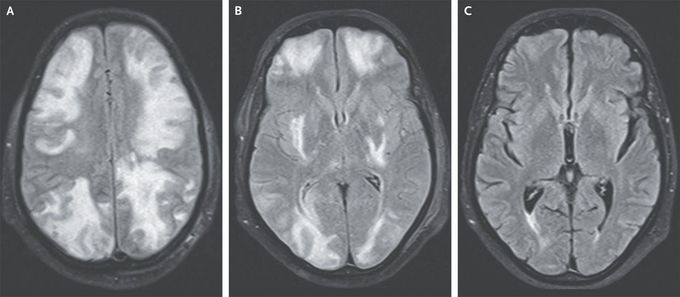


Posterior Reversible Encephalopathy Syndrome
A 35-year-old man with IgA nephropathy presented to the emergency department with a 1-day history of confusion, blurry vision, and seizures. Two weeks before presentation, he had started receiving cyclosporine to treat the IgA nephropathy. His blood pressure was 160/80 mm Hg. Physical examination was notable for drowsiness and decreased visual acuity. A funduscopic examination was normal. T2-weighted magnetic resonance imaging (MRI) of the head with fluid-attenuated inversion recovery sequencing showed hyperintensities in the cortical and subcortical white matter in a holohemispheric watershed pattern — findings consistent with vasogenic edema (Panels A and B show findings at different axial levels). Findings on magnetic resonance angiography and venography were normal. A diagnosis of posterior reversible encephalopathy syndrome (PRES) due to cyclosporine use was made. Despite the name of the syndrome, PRES does not affect only the posterior parts of the brain. The condition may be associated with hypertension, kidney disease, or immunosuppressive therapy, as in this patient. One week after cyclosporine therapy was stopped, the patient’s symptoms and MRI findings had resolved (Panel C).

